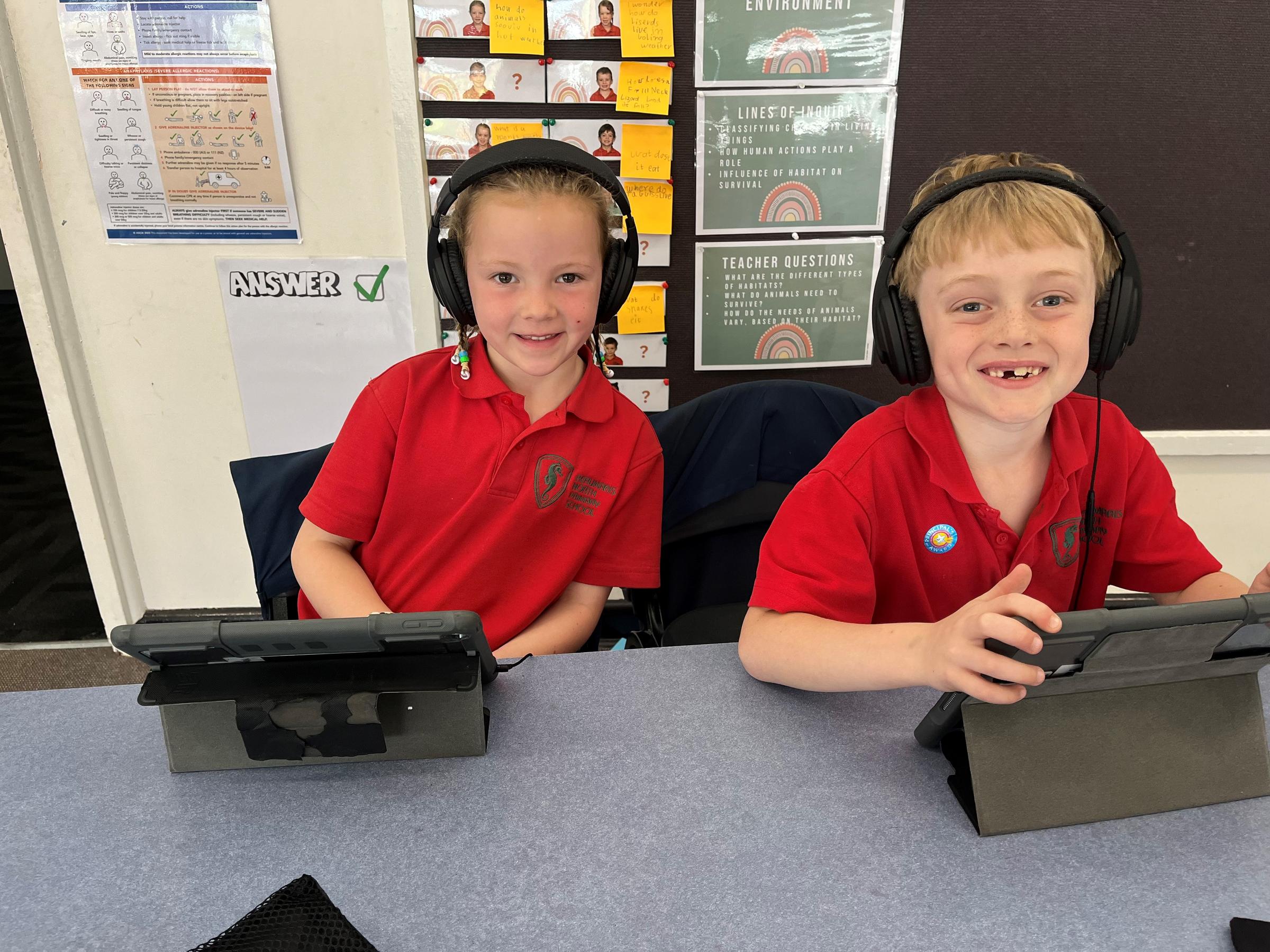Year 1 Specialist News -Term 4

Music
Transdisciplinary Theme
Sharing the Panet
Central Idea
Living things adapt for life in their environment
Lines of Inquiry
- How humans' actions play a role (responsibility)
- How music connects humans who share this planet
Key Concepts
connection
responsibility
Learner Profile Attributes
balanced
knowledgeable
Students Will
- Learn how music connects those from different lands and different times through the singing of songs.
- Reflect on and become knowledgeable about multicultural music.
- Understand that music is used for different purposes and can communicate ideas and feelings.
- Engage in singing activities that connect with the central idea of living things adapting to their environments, highlighting how music reflects and influences our understanding of these concepts.
- Develop their skills in chime bar and note reading as they play accompaniments.
- Participate in learning and performing a social dance from another culture, exploring how music and dance are integral to cultural traditions and social interactions.
- Develop a balanced appreciation for diverse music genres by actively listening to and discussing music from different cultures.
Japanese
Transdisciplinary Theme
Sharing the planet
Central Idea
Living things adapt for life in their environment (in Japan)
Lines of Inquiry
- Diverse animal species and habitats in Japan
- Interactions between people and animals in Japan
- Popular pet animals in Japanese culture
- The cultural significance of animals in Japanese folktales.
Key Concepts
perspective
responsibility
Learner Profile Attributes
thinker
reflective
Students Will
Explore Endangered Species
- Identify and describe endangered animals in Japan and their habitats, fostering a sense of responsibility towards conservation and understanding of environmental challenges.
Describe Animal Characteristics
- Use adjectives in Japanese to describe animals (e.g., “a big animal,” “a white animal”), developing their ability to think critically and communicate descriptively.
Practice Animal Sounds
- Imitate animal sounds in Japanese, linking linguistic and auditory skills to cultural context. This activity helps students appreciate Perspective by understanding how different cultures represent and interact with animal sounds.
Engage with Music
- Sing Japanese animal songs, connecting music with the theme of animals. Students will explore cultural Perspective through traditional songs and their significance in Japanese culture.
Reflect on Folktales
- Listen to and reflect on the Japanese folktale “The Grateful Crane,” exploring why such stories are cherished in Japanese culture and considering the broader significance of animals in cultural narratives.
Participate
- In a Japanese story time session (e.g., “Let’s Go to the Zoo!”), experiencing how stories can depict interactions between animals and people.
Art
Transdisciplinary Theme
Sharing the planet
Central Idea
Our natural environment inspires creativity
Lines of inquiry
- Creating art from our environment
- Famous land artists, and how they use nature to create artworks
- The use of natural materials to create our own artwork
- Shapes and patterns in the natural world to create our art
Key Concepts
form
connection
Learner Profile Attributes
Inquirer
risk-taker
Students Will Create
- Nature Collage, exploring the works of Environmental Artist Andy Goldsworthy to inspire a pattern collage using collected nature from the school grounds.
- Large outdoor collaborative artwork inspired by the Polynesian cultural incursion. Identifying and developing patterns found in nature to paint fence posts, enhancing our school environment.
- Paper Sculpture: Using a variety of materials, colours, and textures to construct a paper seed pod.
Library
Transdisciplinary Theme
Sharing the planet
Central idea
Living things live in different places where their needs are met
Lines of inquiry
- Living things live in a variety of different habitats
- How an animal's habitat provides food, shelter and protection
Key Concepts
connection
responsibility
Learner Profile Attributes
balanced
knowledgeable
Students Will
- Be exposed to books, both picture fiction and non-fiction related to living things and their habitats. These habitats will include rainforests, grasslands, desert, bush/forest, ocean and polar regions
- Discuss the different animals living in these habitats and what their habitat provides.
- Revise the different sections of the library and the types of books that are found in each section.
- Use language related to the Learner profile attributes in the library, such as being principled by showing respect to the books and people and being balanced by sitting and reading quietly at the appropriate time.
- Browse, read and borrow books of their choice.
- Books to be explored include:
- Desert jungle by Jeannie Baker
- Give me home among the gum trees by Bob Brown
- Little Elephants by Graeme Base
- They call me woolly - What animal names can tell us by Keith DuQuette
- The river by sally Morgan
- The wonder thing by Libby Hathorn
- Our dreaming by Kiri Sauders
Central idea
Living things live in different places where their needs are met
Lines of inquiry
- Living things live in a variety of different habitats
- How an animal's habitat provides food, shelter and protection
Key Concepts
connection
responsibility
Learner Profile Attributes
balanced
knowledgeable
Students Will
- Be exposed to books, both picture fiction and non-fiction related to living things and their habitats. These habitats will include rainforests, grasslands, desert, bush/forest, ocean and polar regions
- Discuss the different animals living in these habitats and what their habitat provides.
- Revise the different sections of the library and the types of books that are found in each section.
- Use language related to the Learner profile attributes in the library, such as being principled by showing respect to the books and people and being balanced by sitting and reading quietly at the appropriate time.
- Browse, read and borrow books of their choice.
- Books to be explored include:
- Desert jungle by Jeannie Baker
- Give me home among the gum trees by Bob Brown
- Little Elephants by Graeme Base
- They call me woolly - What animal names can tell us by Keith DuQuette
- The river by sally Morgan
- The wonder thing by Libby Hathorn
- Our dreaming by Kiri Sauders








